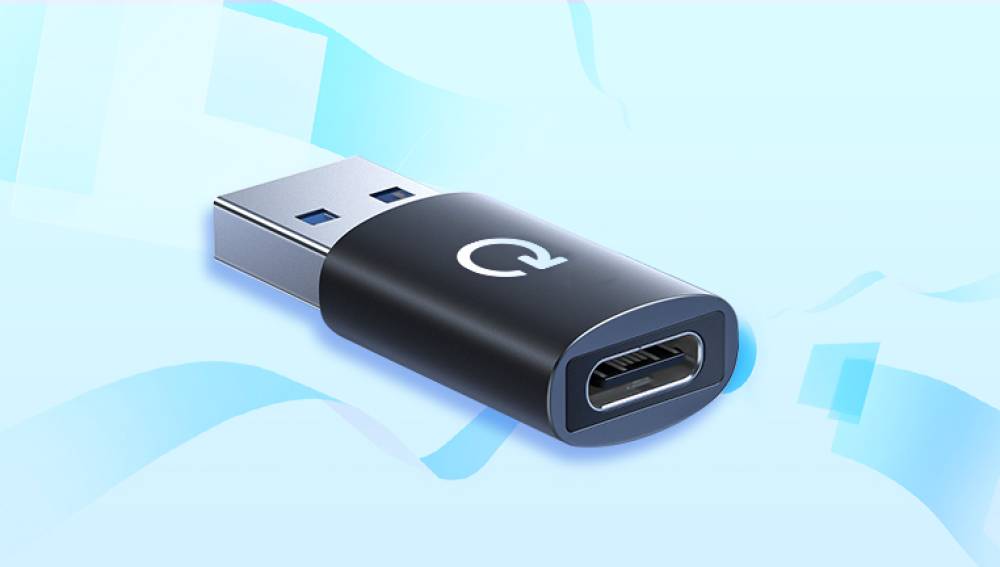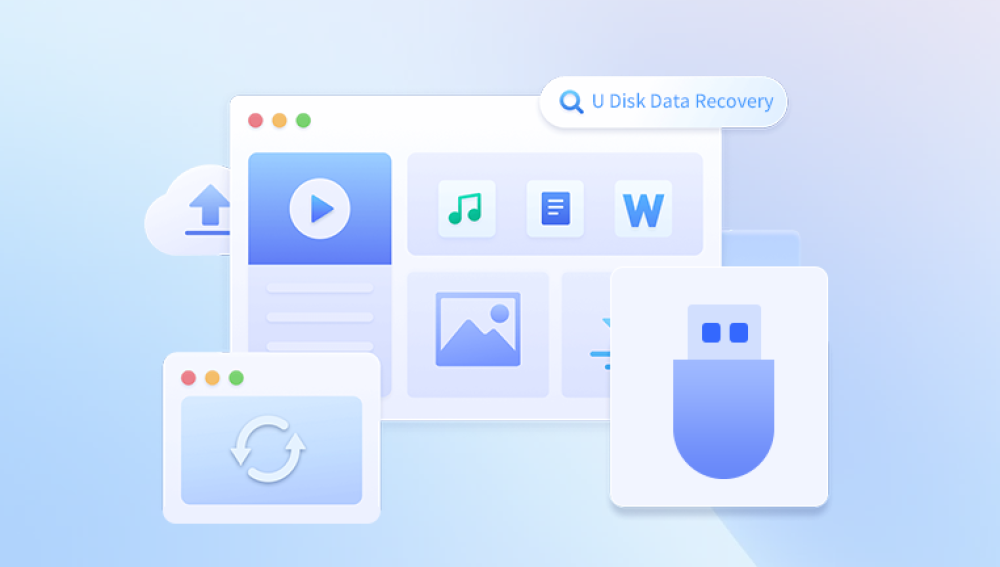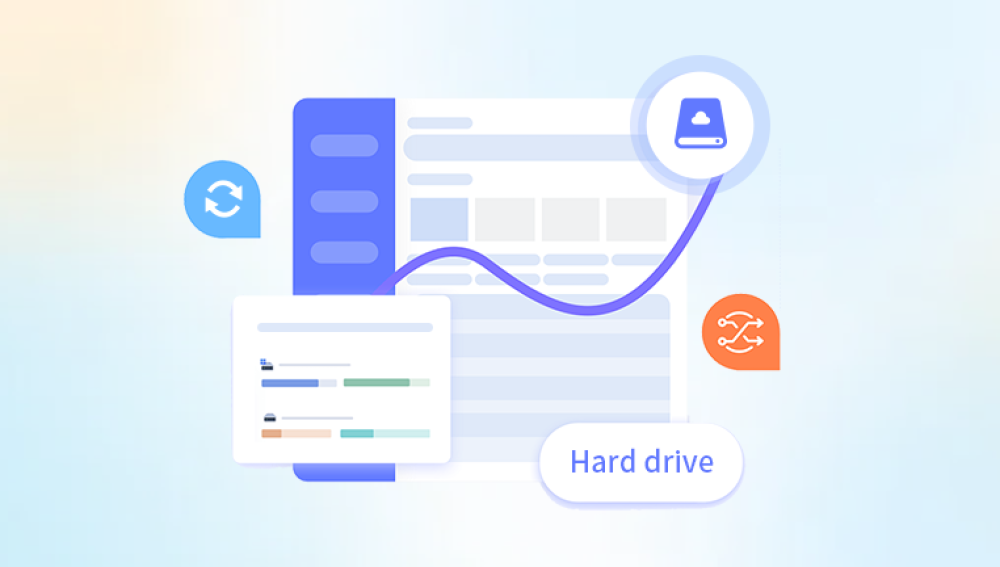They're portable, compact, and incredibly convenient, making them a preferred choice for transferring and storing data on the go. Whether it’s documents, presentations, photos, videos, or software tools, these tiny storage devices are used across personal, academic, and professional contexts.
The need for effective and reliable data recovery solutions for USB memory sticks has never been more critical. When valuable information disappears from your flash drive, the right knowledge and tools can often make the difference between permanent loss and complete recovery.

Part 1: Common Causes of USB Memory Stick Data Loss
Understanding what causes data loss is the first step toward successful recovery. Here are the most common culprits:
1. Accidental Deletion
It’s easy to mistakenly delete files from a USB stick, especially when using shift+delete or cleaning up folders hastily. Most of the time, deleted files don't go to the Recycle Bin—they're immediately marked as free space.
2. Formatting Errors
Accidentally formatting the wrong drive is a frequent mishap. Quick formatting a USB stick doesn’t actually erase the data—it just clears the file allocation table, making recovery possible in many cases.
3. File System Corruption
Improper ejection, power surges, or malware can corrupt the USB stick's file system, making it unreadable. The data may still be intact but inaccessible without specialized tools.
4. Physical Damage
Bent connectors, water damage, or internal component failure can render a USB stick unusable. Depending on the extent of the damage, physical recovery techniques or data extraction via chip-off methods may be required.
5. Virus or Malware Attacks
Certain viruses hide or delete data, or even encrypt it. While some malware only hides files using scripts or attributes, others can be more destructive.
6. Wear and Tear
Flash memory cells degrade over time. USB memory sticks have a limited number of write cycles. As they age, they may fail and cause data loss.
Part 2: Initial Steps After Data Loss
If you’ve lost data on a USB memory stick, what you do next can impact your chances of recovery. Here are the key actions:
1. Stop Using the Drive
Avoid writing any new data to the USB stick. New data may overwrite lost files, reducing recovery potential.
2. Remove the USB Stick Safely
Eject the device properly to avoid additional file system damage. Do not try to reformat or run defragmentation.
3. Use a Different USB Port
Sometimes, the port—not the device—is the problem. Try accessing the stick on a different computer or USB port to rule out connection issues.
Part 3: Data Recovery Methods
Recovery techniques fall into two broad categories: software-based and hardware-based. Each has its own use case and limitations.
Software-Based USB Data Recovery
This is the most common and accessible form of data recovery. It’s suitable for scenarios such as accidental deletion, formatting, or corruption.
1. Using Data Recovery Software
There are several reliable software tools that can scan USB sticks and recover lost files. Here’s how the process generally works:
Step-by-Step Guide:
Download and install recovery software (on your computer, not the USB stick).
Insert the USB memory stick and let the software detect it.
Run a quick or deep scan depending on the severity of data loss.
Preview recoverable files (if supported).
Select and restore files to a different storage location.
Popular USB Recovery Software:
Recuva – Free and simple to use, good for basic recovery.
Disk Drill – Offers deep scan and preview features.
EaseUS Data Recovery Wizard – Suitable for both Windows and Mac, user-friendly.
R-Studio – Powerful for more complex recovery needs.
PhotoRec – Free, open-source tool that recovers a wide range of file types.
2. Command Line Recovery (Windows Only)
For hidden files or simple corruption, the attrib command in Windows Command Prompt can unhide data:
bash
CopyEdit
attrib -h -r -s /s /d X:\*.*
Replace X: with the USB drive letter. This command unhides all files and folders in the drive.
3. File History or Previous Versions
If your USB stick was used in a system with File History or backup utilities enabled, you may retrieve earlier versions of files—though this is rare for external devices.
Hardware-Based USB Data Recovery
When the USB stick is physically damaged or completely undetectable, software won’t help. These cases call for physical recovery methods.
1. Connector Repair
Bent or broken connectors can be replaced by:
Soldering a new USB connector.
Using donor USB sticks with similar architecture.
This should only be performed by experienced technicians to avoid further damage.
2. PCB and NAND Flash Chip Access
When the controller is damaged but the memory chip is intact, technicians may:
Extract the NAND chip.
Use specialized chip readers to recover data.
This process is known as “chip-off recovery” and requires cleanroom equipment and knowledge of NAND structure.
3. Data Recovery Labs
Professional recovery labs are equipped to handle:
Fire or water damage
Internal circuit failure
Controller chip corruption
They clone the memory, reconstruct the logical file system, and extract data using proprietary tools.
Part 4: File Types Commonly Recoverable from USB Sticks
Recovery tools are typically able to restore various types of data, including:
Documents: DOCX, PDF, XLSX, TXT, PPTX
Photos: JPG, PNG, RAW, TIFF
Videos: MP4. AVI, MOV, MKV
Audio: MP3. WAV, FLAC
Archives: ZIP, RAR, 7Z
Executable or System Files: EXE, DLL, SYS
Success rates depend on how fragmented the data is and whether it’s been overwritten.
Part 5: Challenges and Limitations
Not all data is recoverable. Limitations include:
1. Overwritten Data
If new data has been written to the USB stick after file deletion, some or all of the deleted files may be lost permanently.
2. File Fragmentation
Highly fragmented files (especially videos or large documents) may be difficult to reconstruct fully.
3. Encrypted Files
Files encrypted using software like BitLocker may not be recoverable unless you have the decryption key.
4. SSD-Like Behavior
Some newer USB sticks use wear-leveling and TRIM, making traditional recovery methods ineffective.
Part 6: Best Practices for USB Data Recovery
To increase your chance of successful recovery:
Use trusted recovery software with preview capability.
Always save recovered files to a different disk.
Use disk imaging tools before working on sensitive or severely corrupted drives.
If unsure, consult a professional instead of attempting DIY repairs.
Part 7: Prevention Tips to Avoid Future USB Data Loss
Proactive measures can help you avoid data loss in the first place:
1. Backup Regularly
Keep at least two copies of important files—one on the USB stick and one in the cloud or on another storage device.
2. Eject Safely
Always use the “Safely Remove Hardware” option before unplugging a USB stick.
3. Avoid Cheap, Unbranded USB Drives
Lower-quality sticks tend to have higher failure rates.
4. Protect from Physical Damage
Use protective casings, avoid water exposure, and don’t leave sticks plugged in where they can be bumped or bent.
5. Use Antivirus Protection
Scan USB drives regularly and avoid using them in public or unknown systems.
Part 8: Cost of USB Memory Stick Data Recovery
Drecov Data Recovery
Drecov Data Recovery is a versatile software solution designed to help users recover lost, deleted, or formatted files from a variety of storage devices. Whether your data loss stems from accidental deletion, formatting errors, virus attacks, or partition corruption, Drecov Data Recovery offers an intuitive and reliable way to retrieve valuable information. It supports recovery from hard drives, USB flash drives, SD cards, SSDs, and other external storage media.
One of Drecov Data Recovery’s key strengths is its user-friendly interface, which simplifies the recovery process for both novices and professionals. Users can scan their devices in either quick or deep mode, depending on the severity of the data loss. The software then displays a list of recoverable files, organized by file type and location, allowing users to preview and select what they wish to restore.
Part 9: USB Stick Brands with Best Durability
Some USB memory sticks are built better than others. Reliable options include:
SanDisk Extreme Pro
Samsung BAR Plus
Kingston DataTraveler Max
Corsair Flash Voyager GTX
Lexar JumpDrive Tough
These models often come with waterproof, shockproof, and heat-resistant design and longer warranties.
USB memory sticks are incredibly useful but equally vulnerable to data loss. The good news is that recovery is often possible—even in cases that seem hopeless at first. With the right software, hardware tools, or professional help, you can often retrieve critical data.
The key is acting quickly, not writing new data to the drive, and choosing the right recovery method for the scenario. Whether you’re a casual user who deleted a folder by mistake, or a professional dealing with a damaged drive, knowing how to approach USB memory stick data recovery is an essential skill in the digital age.




